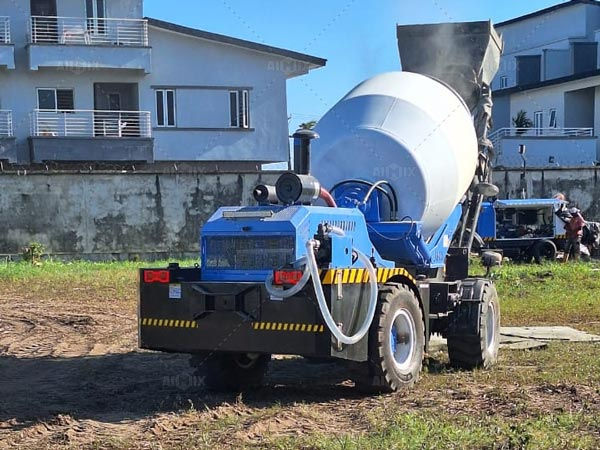Understanding Self-Loading Concrete Mixer Capacity: A Comprehensive Guide
- aimixglobal5
- Aug 22, 2024
- 2 min read
When choosing a self-loading concrete mixer, capacity becomes a crucial factor. The right capacity ensures efficiency, meets project needs, and avoids unnecessary costs. In this guide, we will delve into everything you need to know about self-loading concrete mixer capacity.
What is Self-Loading Concrete Mixer Capacity?
Self-loading concrete mixer capacity refers to the volume of concrete the mixer can produce per batch. This measurement is usually in cubic meters or cubic yards. The capacity directly impacts the efficiency and suitability for different types of projects.

Why Capacity Matters
Choosing the right capacity for your self-loading concrete mixer is vital. A mixer with too small a capacity will need frequent refills. This can lead to inefficiencies and increased labor costs. Conversely, a mixer with too large a capacity might be a waste of resources.
Different Capacities for Various Needs
Self-loading concrete mixers come in various capacities to meet different project requirements. Common capacities include 1.2 cubic meters, 2.6 cubic meters, 3.5 cubic meters, and larger options. Each size has its unique advantages and ideal applications.
1.2 Cubic Meters: Small-Scale Projects
The 1.2 cubic meter mixer is excellent for small-scale projects. These include residential driveways, small foundations, and minor repair jobs. Its compact size allows for easy maneuverability in tight spaces.
2.6 Cubic Meters: Medium-Sized Projects
For medium-sized projects, a 2.6 cubic meter mixer is a suitable choice. This capacity is perfect for small apartment buildings, commercial floors, and medium-sized foundations. It balances efficiency and size, making it versatile for various tasks.
3.5 Cubic Meters: Large-Scale Projects
Larger projects often require a 3.5 cubic meter mixer. This size is ideal for large residential buildings, commercial complexes, and significant infrastructure projects. Its higher capacity reduces the number of batches needed, enhancing productivity.

Factors to Consider When Choosing Capacity
Several factors determine the ideal capacity for your self-loading concrete mixer. These factors include project size, site accessibility, and budget constraints. Understanding these considerations helps you make an informed choice.
Project Size
The size of your project is a primary factor in choosing self loader mixer capacity. Larger projects require a mixer with a larger capacity. Smaller projects can use a smaller mixer, which is more economical and easier to handle.
Site Accessibility
Site accessibility also impacts your choice. Tight or confined spaces may require a smaller, more maneuverable mixer. In contrast, open spaces can accommodate larger mixers without issues.
Budget Constraints
Your budget is another critical factor. Larger mixers often come with higher upfront costs. However, they can save money in the long run by reducing labor and time. Smaller mixers are more affordable but might increase operational costs due to frequent refills.
Conclusion
Choosing the right capacity for your self-loading concrete mixer is essential for project success. It ensures efficiency, meets your specific needs, and keeps costs under control. Whether you are working on a small residential project or a large commercial development, understanding the importance of mixer capacity helps you make the best decision. Consider your project size, site accessibility, and budget to find the perfect mixer for your needs. Investing in the right capacity mixer ensures smooth operations and high-quality concrete production.







Comments